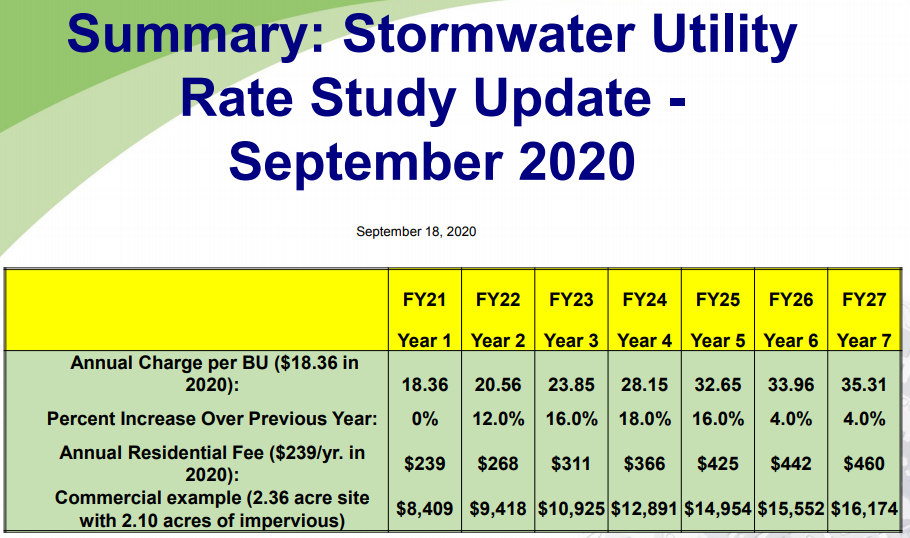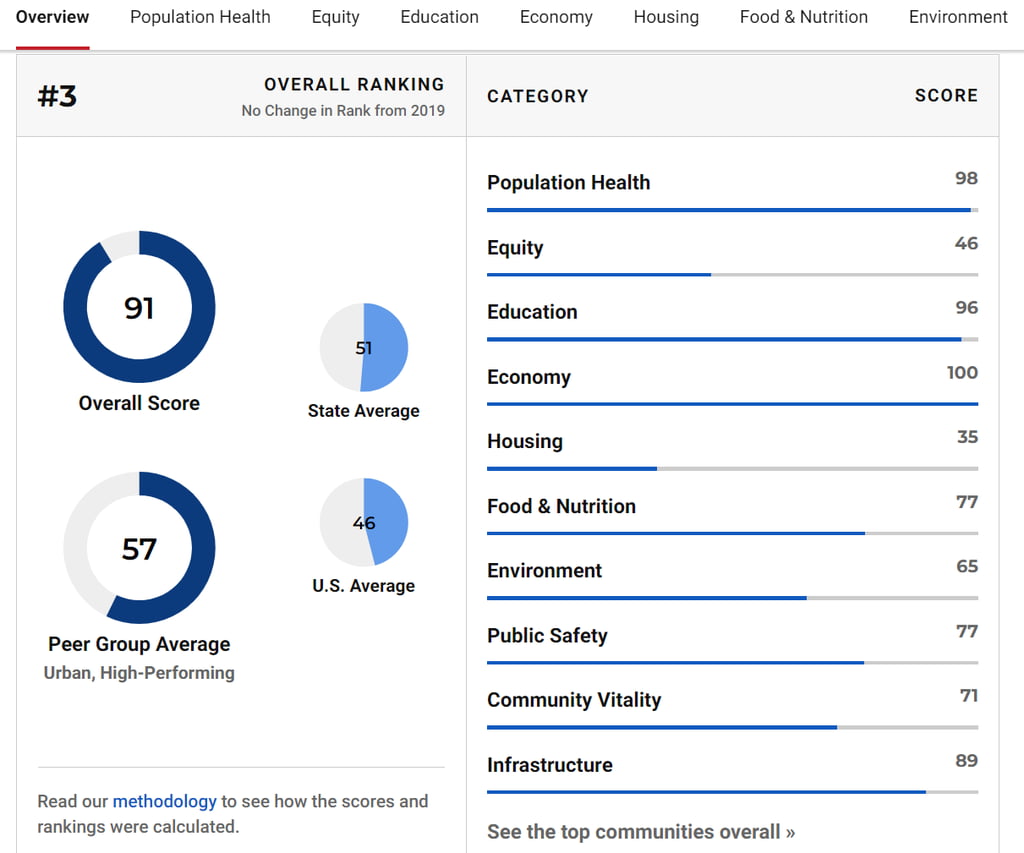Updates from Letty – September 25, 2020
Blog posts are the personal views of Letty Hardi and not official statements or records on behalf of the Falls Church City Council
Dear Friends,
One week into early voting and 40 days before November 3rd – we already have over 14% turnout in Falls Church! A plea from the registrar: if you requested a mail in ballot, please vote using that ballot (and return by USPS or the drop box outside City Hall). It’s a misconception that mailed in ballots are not counted the same way as ballots cast in person. As long as a mail ballot is received by Election Day, it will be included in Election night reporting. If you plan to vote early, here is more information.
This week’s focus will be about stormwater. Since the July 2019 flooding event, we commissioned a citizen task force and outside consultants to provide recommendations, which were put on hold in March due to COVID-19. This week, we revisited the 6 projects totaling $12M and a funding plan that would gradually double the stormwater fee over the next 6 years. Clearly $12M is a big investment and merits deliberation, especially during a pandemic/recession and when we’ve taken on a lot of other debt and juggling other priorities.
A few other items this week: we’ve held onto our #3 spot of Healthiest Communities in the US (as always, there’s more than the headline) and Halloween safety tips as we approach October. And for those following the Broad and Washington project, note that there are two events happening next week – a walking tour of the site and a virtual meeting with developers. City Council won’t meet next week in observance of Yom Kippur; we resume with a work session on October 5 so my posts will take a week off too.
I’d welcome your thoughts about the stormwater proposal, so feel free to email me directly or to all of City Council.
Take care,
Letty
What Happened This Week:
(1) Stormwater
Following the July 2019 flood, which I know created some devastating impacts in pockets of the city, we chartered the Stormwater Task Force to evaluate and prioritize 6 projects that could address those problematic areas with recurring floods. The task force recommended all 6 projects as critical:
- E. Columbia/ Harrison Branch
- W. Columbia/ Trammel Branch
- Hillwood #2/ Robertson Branch
- Hillwood Ave #1/ Ives Branch
- Sherrow Ave/ Tripps Run
- Lincoln Ave/Ellison Branch
(4 smaller projects – Poplar Dr., Midvale St., Ellison Rd. and Wren’s Branch – are funded with existing money in the stormwater fund and are underway already).
After a rate study, staff shared a financing plan on how to accomplish the projects. The projects would cost $12M in debt, with debt service to be funded by stormwater fee increases over the next 6 years. The first tranche of debt is proposed to be issued in October to fund engineering and design plans.
As an example, today’s average stormwater fee for a single family residence is $239. The first rate increase would go into effect in 2022, with successive increases until 2027 when that same residence’s stormwater fee would be $460.
The staff presentation details the 6 projects and the funding plan. See here for a refresher on how the stormwater fee is calculated (it’s based on amount of impervious surface).
Letty’s thoughts:
As with much of the city’s infrastructure we’ve tackled the past 4 years, I know our stormwater system is aging and insufficient (most pipes date to when the city rapidly grew from the 1930s-1960s), and in some cases, completely absent. With climate change, we know we’re seeing more severe and frequent flooding events, which overwhelms the system further. I do sympathize with residents who have been dealing with repeated floods or those who never had flooded basements before and are now closely monitoring weather forecasts and flood warnings. This is infrastructure that needs re-investment.
That said, for those who have been long time readers, you’ll know that I take fiscal responsibility seriously and want to make sure each spending decision is thoughtfully analyzed. $12M new debt is not something we should rubber stamp, especially in the middle of a pandemic and recession when the budget future is unknown and increases in fees/taxes will acutely hurt residents and businesses already suffering.
I raised a number of questions in our work session that I’d like to see addressed before proceeding:
- Equity – at the presentation, it was noted that 48 houses would benefit from these projects and 128 houses were impacted from the 2019 flood. I think it’s important for us to understand the cost of the projects vs the limited benefit, if it is indeed only 48 houses.
- Financial – in October, we expect to see an update on the budget and revenue forecasts based on 6 months of COVID fallout. We should have those forecasts as a backdrop before committing to new projects. We should also have our eyes wide open that taking on $12M of new debt will be concurrent with the same years the debt service will be highest for the high school/library/city hall bonds. As everyone believes stormwater infrastructure is important, what is a more prudent way to sequence and pay for the projects instead of debt financing all 6 projects?
- Plan for the Future – the projects are designed for a 10 year flood standard, which is current industry practice. Knowing that we’re seeing more severe and frequent flooding, should we increase the standard – which would cost more but increase our resilience to climate change?With the proposal to take out 20 year bonds, I generally believe infrastructure’s usefulness should match a similar time horizon as the debt we’re passing onto future generations.
- Big Picture “Upstream Issue” – as I’ve written about before, I’d like to see a more comprehensive plan that addresses the root causes of the flooding (climate change aside). They may not be a substitute for the projects, but it feels shortsighted to address downstream flooding without tackling why it’s happening. I suspect that more stringent policies, and enforcement of such policies, on residential redevelopment and mature tree preservation are key. As it stands, we have policies that limit 25% building coverage and 35% impervious coverage per lot – how many variances are given where we allow people to go above those limits? We also have a requirement that residential redevelopment achieves 20% tree canopy within 10 years – clear cutting and replacement trees still achieves that metric, but small trees clearly don’t have the same ecological and stormwater benefit as mature trees.
- Alternatives – all of the plans involve creating bigger or new pipes to carry water through the storm system. Are there more cost effective options such as buying out flood prone properties and converting into park land with retention facilities? Or creating larger incentives and expanding stormwater credits for homeowners to incorporate more green infrastructure?
If we proceed to issue the first tranche of debt in October for engineering and design, that essentially commits us to the full $12M plan. Just like we’ve had a number of public forums to hear from the community before starting other large capital projects like the high school and library, I’ve stressed the importance to do the same here.
Email us with your thoughts or questions.
(2) Halloween Tips
I’ve fielded a number of questions about Halloween and how to celebrate it safely. As the city doesn’t organize or dictate trick or treating, I don’t expect the city will provide official guidance declaring it “on” or “off”. You may find the guidelines the CDC issued this week helpful as you plan how to celebrate safely. This seems like one holiday that can be managed safely using protocol we all know well by now – masks, distancing, and keeping it outdoors.
(3) Falls Church is #3 healthiest community in US
By now you may have seen the City again made the rankings for US News & World Report’s Healthiest Communities (#3 this year, #3 in 2019, and #1 in 2018 when the rankings were first released) – especially important this year during a pandemic. There’s a lot to be proud of: our top scores were in the categories of population health, education, and economy – all areas we’ve invested in.
At the same time, let’s not rest on our laurels. Health is correlated to socioeconomic status and community affluence. We should hold ourselves accountable on how we can keep improving. Of note is that our lowest scores were in equity and housing, which were well below average, even among our peer groups. I encourage you to dive into the data and share ideas on how we can do better.
What’s Coming Up:
Citizens for Better City (CBC) Conversations with the Candidate via Zoom:
- Sun, 9/27 – 5-6 pm (Josh Shokoor)
- Sun, 10/4 – 5-6 pm (Simone Pass-Tucker)
If you missed the two forums where all 3 City Council candidates appeared, the recordings are available for the Chamber of Commerce forum and the League of Women Voters/VPIS forum.
City Council Meetings start at 730 pm, unless otherwise specified. You can access the agenda and livestream here, including recordings of past meetings including virtual Board & Commission meetings: https://www.fallschurchva.gov/471/Watch-City-Council-Meetings